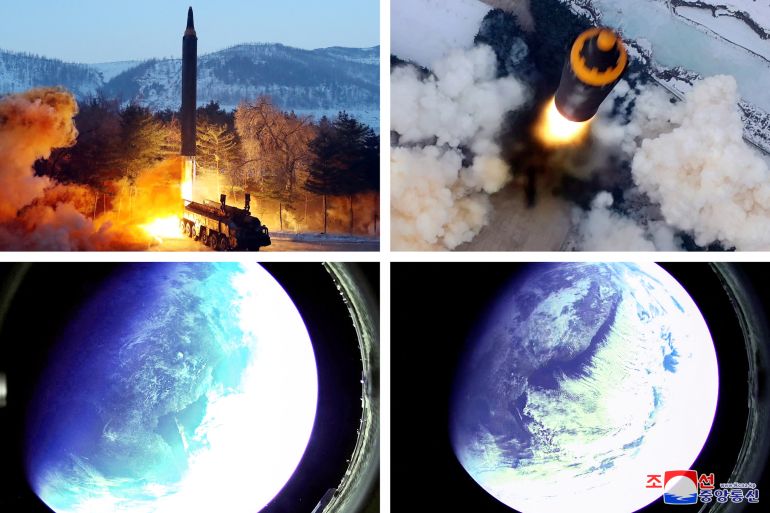North Korea says Sunday’s test was a Hwasong-12 missile
Test marks first time the nuclear armed country has launched a weapon of that size since 2017.

North Korea has confirmed it fired a Hwasong-12 “mid-range ballistic missile” on Sunday, the first time it has tested a weapon of that size since 2017.
Japan and South Korea both detected the launch of the suspected intermediate-range ballistic missile (IRBM) on Sunday morning, the seventh weapons test this month.
Keep reading
list of 4 itemsNorth Korea confirms latest tests as Kim visits weapons factory
Pyongyang continues launch blitz with two suspected missiles
North Korea appears to have fired two cruise missiles: Report
The two countries condemned the test as a threat to regional security with South Korean officials warning the launch could lead to the resumed testing of long-range weapons and nuclear bombs.
“The inspection firing test was conducted for the purpose of selectively inspecting the ground-to-ground mid-range long-range ballistic missile Hwasong-12 and verifying the overall accuracy of this weapon system,” North Korean state news agency KCNA said on Monday.
North Korea has previously said the Hwasong-12 can carry a “large-size heavy nuclear warhead”.
KCNA reported the missile launch was conducted in such a way as to ensure the safety of neighbouring countries, and that the test warhead was fitted with a camera that took photos while it was in space.
Photos released by state media showed space-based images of North Korea and the surrounding areas through a round camera lens. North Korea first took such images in 2017, analysts said.
The United States expressed concern about the escalating tests, with January one of the busiest ever months for Pyongyang’s advancing weapons programme.
It again urged the North to return to denuclearisation talks, which have been stalled since 2019 when a summit between Kim and then US President Donald Trump collapsed over the North’s demands for sanctions relief.
“They are looking to take actions, which we believe are fundamentally destabilising, as a way to increase pressure,” a US official told a briefing of journalists in Washington, DC. “I think that there probably is a component that is also to validate the systems that they’ve developed and further refine them.”
Leader Kim Jong Un was not reported to have attended the latest test.
North Korea has hinted earlier this month it may end a self-imposed moratorium on testing its longest-range intercontinental ballistic missiles (ICBMs) and nuclear weapons.
The Hwasong-12, which has an estimated range of 4,500km (2,796 miles) and with the ability to carry a nuclear warhead, was last tested in 2017 with three successful flights and three failures.
In Sunday’s test, North Korea said it fired the missile on an elevated trajectory “in consideration of the safety of neighbouring countries.”
The test “confirmed the accuracy, safety, and operational effectiveness of the produced Hwasong-12 type weapon system,” KCNA said.
The largest and most powerful missile North Korea has tested to date is the Hwasong-15 with an estimated range of 8,500–13,000 km (5282-8,078 miles). It has had one launch – in November 2017 – when Pyongyang declared itself a nuclear power.
The string of launches in 2022 comes at a delicate time in the region, with Kim’s sole major ally China set to host the Winter Olympic Games from Friday and South Korea gearing up for a presidential election in March.